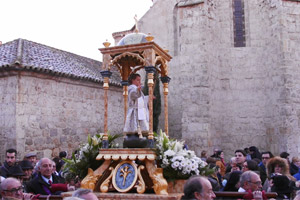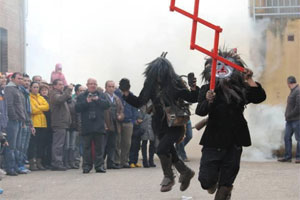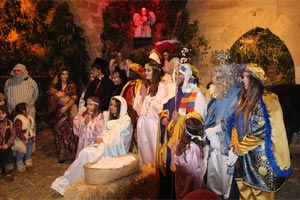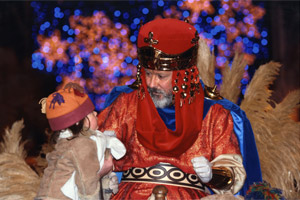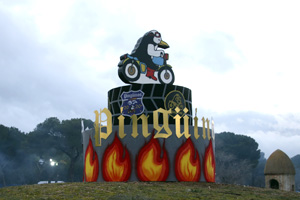The Party of Vitor
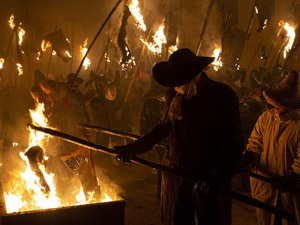
The Party of Vítor or also called Civic Procession El Vítor is celebrated every September 27th in Mayorga, Valladolid. It is a tradition of National Tourist Interest, in which homage is paid to the relic of Saint Toribio Alfonso de Mogrovejo, patron saint of the town.
What is the origin of this festivity?
The origin of this festivity begins in 1650 when the inhabitants of Mayorga, carrying torches in their hands, welcomed the patron saint of the village Toribio Alfonso de Mogrovejo.
This traditional procession was celebrated in this way because at that time, residents of this village did not have electricity. A ritual that year after year is carried out with people walking through the streets dressed in old clothes, each one carrying a torch and some hides, which are hanging on some poles, to then light them.
The community makes a whole journey with its banner until they reach the Ermita de Santo Toribio, the place where the patron saint was born.
What is the Vítor?
The Vítor is a banner which is used in honor of the saint. Every 26th of September the locals of Mayorga in company of the stewards of the Congregation of the Vítor march in procession to the chapel of the saint.
There, the eve of the Vítor Festival begins and where part of the celebration is the famous burning of the Cubo, a symbolic way of representing all the sciences known to Santo Toribio among which stand out: philosophy, astronomy , grammar, among others.
What are the hides?
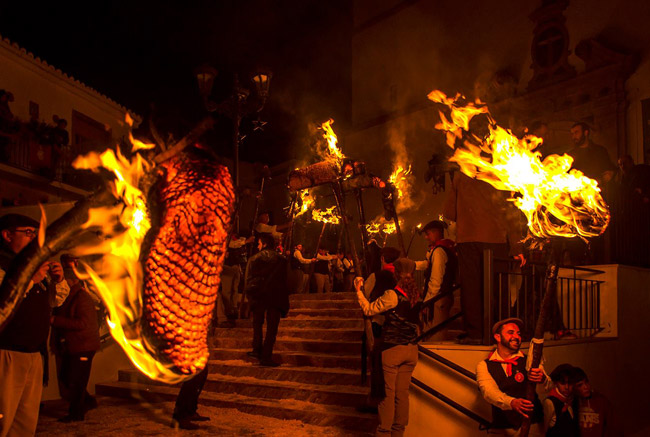
The hides are tanned skins that are extracted from goats, which after being submerged for seven days in wine, are placed in the air to dry. The hanging skins add more eye-catching and interest to the event, since they are used to be lit during the tour.
They are hung at the top of the wooden poles, which are connected with iron wires. When they are lit by the bonfires carried by the pilgrims, the streets are lit by the constant dripping of the burning flame.
How is the procesion carried out?
The procession is accompanied by chants, while the bearers of the banner are lighting the skins. It is quite common to see the participants attend the procession with quite particular attire, with gloves, clothes of the time and straw hats.
During the tour, people go in a rhythmic way and once they make the first stop, the fireworks begin in the town square, then, late in the morning, the hymn to Santo Toribio begins, culminating the event with a cease-fire to then proceed with the burning of straw hats.
What to do and what places to visit in Mayorga during the festival?
There are many places to see when you visit Mayorga during this festival. One of the favorite places for people during these dates is the famous Bread Museum, where numerous proposals about this rich food are exhibited and workshops are given for children.
Another truly emblematic site in this region is the oldest Stone Mailbox in all of Spain. Here you can visit other monuments, churches, mansions and palaces of unique architectural beauty.
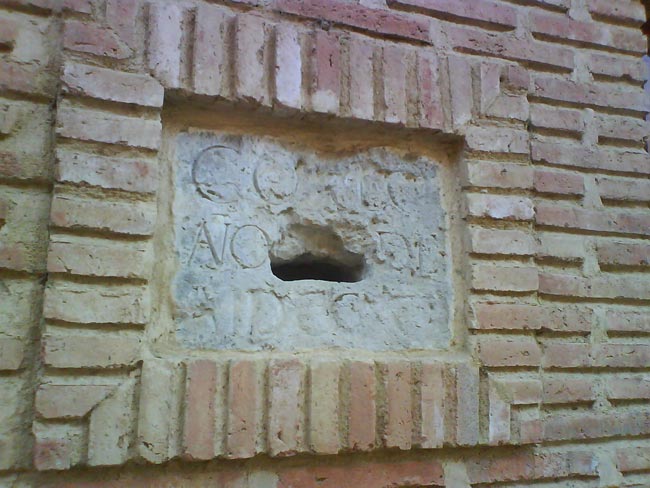
As for its gastronomy, Mayorga is known for offering its diners really enviable and very varied dishes, which you will only find in this place. You will be able to taste the exquisite roast of lamb, the chicken of corral, the pardinas lentils or the traditional dessert called zapatilla and an excellent pastry that will make your palate water.

